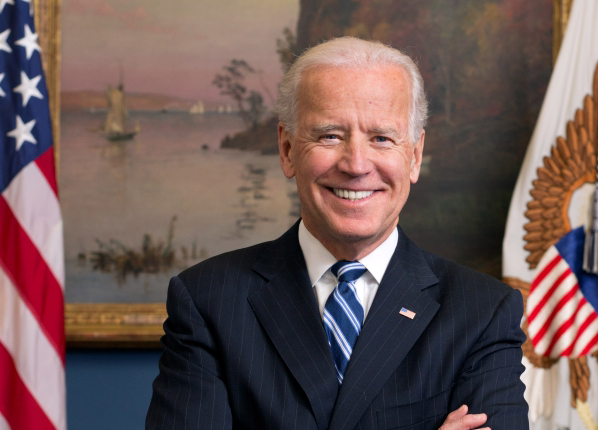Biden Border Policies Are Working Fine — For the Cartels
In July 2023, in an appearance before the House Judiciary Committee, when pressed about the results of the newly expanded CBP One program in stemming the flow of illegal migration, DHS Secretary Alejandro Mayorkas said, “Our approach to managing the borders securely and humanely — even within our fundamentally broken immigration system — is working.”
But working for whom?
The open border most certainly is working out well for certain special interests: employers who want to hire the migrants at lower wages, government contractors cashing in on contracts to shelter and transport the migrants, and governments in the sending countries that depend on the millions of dollars in remittances. Most of all, it is working for the drug cartels and transnational criminal organizations who now control the border.
Illegal immigration now far exceeds legal immigration. As a result, the cartels are reaping unprecedented profits from human and drug smuggling and trafficking, to the tune of $30 million a day, or nearly $1 billion a month, according to a House Budget Committee report. They use the funds to acquire more sophisticated weapons and technology to solidify control over their territories in Mexico and beyond. More worrisome for the long term, however, is the way the cartels are using this cash cow to underwrite an expansion of their operations within the United States. This expansion presents profound implications for public safety in communities across the nation that will persist for years into the future, and will require a much more a concerted effort and inventive new strategies.
According to Border Patrol testimony to Congress, the smuggling fee is currently about $8,000 for passage to America. Many migrants make only a down payment up front of about $500, and agree to work off the rest when they get to their destination. If they have children, they are encouraged to accept a reduced fee for loaning one of their kids to another single migrant (in order to pose as a family for near-certain release) and retrieve them on the other side (hopefully). The remainder is typically paid through debt bondage accomplished by wage garnishment, fees for housing and food, and other forms of exploitation and outright threats and extortion. Long-haul migrants from other continents pay more, sometimes up to $50,000, and those who don’t want to get caught also pay more. Our government helps subsidize this enterprise by paying a network of NGOs huge sums of taxpayer funds to arrange transportation, shelter, and other services on the final leg of the migrant’s journey to their destination.
The migrant-moving business is lucrative enough, but it also helps further another critical illicit cartel activity — drug smuggling. The cartels routinely send large groups of migrants over the border in certain areas to bog down the Border Patrol while they move drug loads through the other unguarded areas, along with high-value clients, such as criminals and watch-listed individuals, who don’t want to be caught by the Border Patrol.
In the last three years, the amount of illicit drugs flowing into American communities has exploded, with deadly, tragic consequences, and the cartels are behind nearly all of it, according to a recent exhaustive report by the House Homeland Security Committee. It’s happening not just in southwest border states, not just in cities, but also in rural areas, including Montana, Kansas, Kentucky, and many others.
With the profits from cross-border trafficking so enormous, the stakes for control of the plazas, or spheres of control along the border, have risen as well, increasing instances of deadly violence. For example, one night in mid-December, a shoot-out broke out among rival cartels for control of several areas along the Arizona border with large gaps in the border fencing giving easy access. Responding to the melee, Border Patrol agents arrested one man on a private ranch on the U.S. side who was carrying an AK-47, two AK magazines, a handgun, and ammunition. Mexican authorities found 10 improvised explosive devices (IEDs) on the other side of the line.
Obviously, the cartels are not humanitarian actors seeking only to help asylum seekers; nor are they young, impetuous gang-bangers. They behave like terrorists, and they have a plan, which they hire well-trained and well-armed violent thugs to carry out. Given the porous border, moving their operatives into this country to manage the business has not been difficult lately.
For years, many American observers, including some in law enforcement, have been in denial of the threat that the drug cartels pose to America, insisting that the narco-bosses were too afraid of U.S. law enforcement agencies to try to replicate their violent tactics here. That theory has always been naïve, and is now thoroughly discredited. Among the acts of violence attributed to the cartels was an incident in January 2023 described by authorities as an “early morning massacre”, where six people, including a recently bailed-out Surenos gang member, but also a baby and his teenage mother, were executed in a quiet residential street in Goshen, Calif., Reportedly, the surviving family members afterwards refused all offers of help from local authorities
In 2022, federal authorities alone made more than 300 arrests for Mexican cartel-related crimes, according to one analysis.
The cartels are sophisticated business people, and nimble at adapting to emerging opportunities. The have evolved horizontally to branch out into new ventures, for example human trafficking as well as drug trafficking, in fentanyl trafficking as well as heroin and marijuana trafficking, and stealing oil as well as automobiles. Noticing the trend in some jurisdictions away from imposing stiff consequences for shoplifting and burglary, some cartels have branched out into the $70 billion organized retail theft industry, creating squads of operatives to steal goods on a major scale, even roping in recent illegal migrants as a way to pay off their smuggling debt, according to Immigration and Customs Enforcement investigators.
The Sinaloa Cartel and Cartel Jalisco Nueva Generacion (CJNG) in particular have lost no time capitalizing on the state legalization of marijuana, opening tens of thousands of illegal weed, or “blood cannabis”, grows in northern California, Oregon, and other states, where they undercut lawful growers and use trafficked labor, managed violently. Local sheriffs lament that they are woefully out-manned and out-gunned, and can’t keep up with the body count. “We’re a very short amount of time away from having heads in the square like they do down in Mexico,” said Mendocino County Sheriff Matt Kendall in December 2021.
Expanded cartel operations in the United States is good for their local criminal partners, too, who help distribute and sell the illicit products. The cartels have relationships with different partners in different locales, working everyone from MS-13, to the Bloods, Crips, Latin Kings, and Aryan Brotherhood. In eastern Massachusetts, for example, they work mostly with distributors from the Dominican Republic, who dominate the local drug trade. In December, a 42-year old Dominican woman living in Massachusetts was sentenced to 11 years in prison for receiving huge amounts of fentanyl and laundered cash for the Sinaloa Cartel. She hid some of the product in her young daughter’s bedroom closet. The Dominican drug traffickers in particular are known to use the stolen identities of U.S. citizens from Puerto Rico to conceal their illegal presence from authorities and fraudulently obtain driver’s licenses and welfare benefits.
Not all of the cartels operating here are from Latin America. According to a federal law enforcement memo leaked to the Daily Caller, Chinese transnational crime groups have established about 750 illegal marijuana grow operations in rural areas in the states of Maine and Washington, often in collaboration with Mexican cartels.
Chinese foreign nationals purchased and operated the grow houses with financing obtained from a handful of mortgage companies. According to Derek Maltz, a retired DEA agent, the Chinese groups “take the cash from the [Mexican] cartels in America, and they buy these properties and they do these investments with cash from the Mexican cartels in our own country. This is part of their laundering scheme.”
Reporters from the Maine Wire tracked down more than 100 of the unlicensed operations, located in unassuming houses with boarded-up windows and outfitted with commercial grade electrical systems, and a few low-profile workers lurking around, all very conspicuous to the neighbors. One such operation was located across the street from a daycare, where the children and workers, along with the other neighbors, were regularly subjected to the unmistakable fumes polluting the air. Federal authorities believe that the operations generate profits of more than $4.37 billion per year, much of which likely goes back to China.
This business model requires creating a “safe” environment in which to operate. The cartels often create their safe space through violence, extortion, and even corruption of public officials. These civil society threats come on top of the other significant costs to taxpayers, including the cost of expanded services to the migrants and lost job opportunities and depressed wages for legal U.S. workers. In Texas, large swaths of two counties have been literally taken over with what may be the largest settlement of illegal migrants in the country, in Liberty County, a two-hour drive east of Austin, the state capital. The Gulf and Sinaloa cartels originally established enclaves in this area for stash houses for smuggled drugs and aliens. Now, with the help of unscrupulous real estate developers, political patrons, and the open-border policies, this area is a massive and nearly unpolice-able haven for the cartels, their employees, and their trafficked clients that has driven out most long-time American residents and spawned crime and violence on a third-world scale.
Biden’s disastrous border and immigration policies that have enriched the cartels and brought their havoc into the United States will require lawmakers to make bold and substantial changes to our laws and give new authorities and tools to the law enforcement agencies that will have to confront and dismantle them.
Obviously, the best defense against the foreign cartel threat is a secure border, and lawmakers must start there, although it will take more than tweaks to the asylum system to shut down the cash cow of migrant smuggling. Tough new enforcement measures such as those in H.R. 2, the House border security bill are essential to this effort.
In addition, Congress should create a new type of “designation” for the cartels similar to the approach to international terrorist groups, which would enable authorities to target the financial assets of the cartels, to utilize other government resources, including the military and intelligence agencies, and to bar or deport foreign citizen operatives from our country.
Federal and state governments should act against the infrastructure that supports cartel-sponsored illegal immigration and trafficking, especially the money transmission networks. A grand jury investigation in Florida recently outlined how the vast flow of remittances of money from the United States to foreign countries includes within it a flow of money to the cartels. A significant share of this outflow of funds is not a transfer of funds from migrants to their families in their home countries, or even payments directly from the migrants to their smugglers, but actually huge sums of money that are being laundered by the cartels and disguised as remittances.
To help disrupt this flow of money, state governments should consider enacting “know your customer” laws that require money transmitters to collect secure identification from anyone sending funds abroad, in addition to levying a tax or fee on the funds that are sent.
Since so many of the cartel operatives are not U.S. citizens, immigration laws can effectively be used against them, as long as immigration officers and special agents are not limited to pursuing convicted criminal alien felons, as has been the case under Biden. ICE should be empowered to launch a new program focusing exclusively on using immigration and customs authorities to attack the cartels, their businesses, and their revenue, much as it did to address the MS-13 problem nearly 20 years ago. In addition, worksite enforcement must be expanded to uncover the widespread debt bondage, forced labor, and exploitation that was enabled by the recent laissez-faire policies.
Finally, critical to the success of the cartel eradication program will be a concerted effort to rebuild the necessary partnerships between federal, state, and local agencies that have been eroded by the sanctuary city movement and the recent neglect of routine public safety-oriented immigration enforcement. Restoring the popular 287(g) delegation of authority programs — specifically, the investigative versions — in locations that have cartel activity and launching task forces to unite jurisdictions to counter this threat will help.




![Form I-485J: Filing Guide | Approval Notice, Fees, Receipt [2023] Form I-485J: Filing Guide | Approval Notice, Fees, Receipt [2023]](https://www.immi-usa.com/wp-content/uploads/2022/04/Screenshot-2023-08-18-at-2.08.03-PM-300x118.png)

